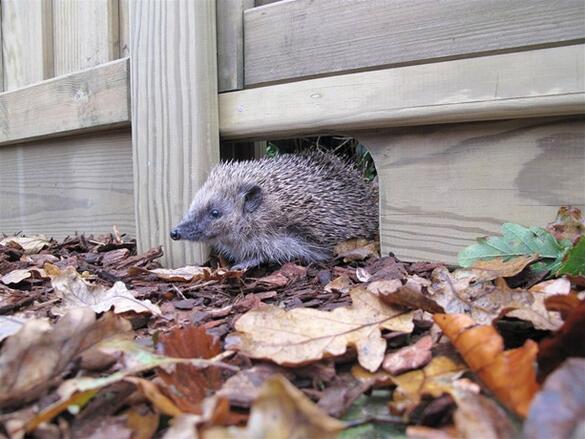Which garden features do hedgehogs prefer?
A new study has been published by the people's Trust for Endangered Species (PTES) and the British Hedgehog Preservation Trust (BHPS) funded researcher, Abi Gazzard at the University of Reading. The study tracked hedgehogs to see how they used different habitats, such as garden features.
Urban gardens are becoming more important to hedgehogs as the hedgehog populations decline in the countryside. Why hedgehogs visit certain gardens and which features can encourage them in are just some of the enquiries answered in this research.
To study hedgehog activity radio trackers were attached to the hedgehogs under a special license. The study was conducted in a suburb of Reading over a three year period. The hedgehogs were monitored for between one and nine nights. This resulted in a total of 98 nights of data.
Garden preferences
The average number of back gardens used per hedgehog per night over the study period was 8.1. This reflects earlier research showing how far hedgehogs can travel in a night and how many different gardens they visit. Back gardens were visited about twice as frequently as front gardens.
Garden features
The preference of habitat was different between the sexes. Males preferred the back gardens of detached houses followed by the back gardens of semi-detached houses. Females had no strong preference between detached or semi-detached, or the front gardens of detached houses. Amenity grassland was the least preferred type of habitat. This could be due to their high use by people and dog walking, as well as their highly managed status.
The features in a garden proved to be good influencers of the length of time hedgehogs spent in a garden. Hedgehogs spent more time in gardens:
- where supplementary food was provided
- in those which had compost heaps
Hedgehogs spent less time in gardens:
- which had frequent fox sightings,
- ponds
- little surrounding garden habitat and front-to-back access.
Food is usually only provided once a householder realises they have a hedgehog visiting their garden, so is unlikely to be a feature which originally attracts them to the garden. It’s clearly a feature which keeps them visiting. More research is needed to understand how supplementary feeding can benefit or hinder hedgehogs, as such food could affect hibernation patterns and increase disease transmission.
Compost heaps can provide nesting opportunities as well as feeding opportunities. Researchers were surprised that ponds were not preferred by hedgehogs, though this could be due to householders providing drinking water as a replacement to fresh water hedgehogs would take from the pond.
The study shows the importance of certain garden features and how they can relate to the extent of use of gardens by hedgehogs. It is important to understand why hedgehogs may or may not choose to frequent a garden so that we can help to stop their decline.
Click on the hedgehog to read the full research paper.

"It's all about encouraging people to participate and learn about the natural world through hands on discovery."

